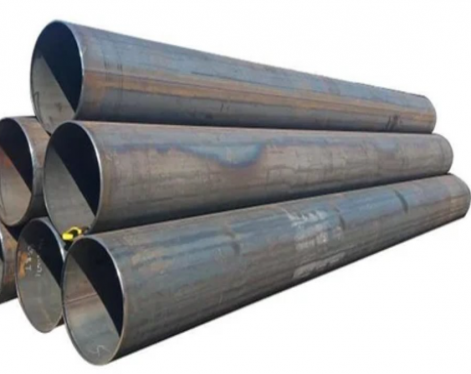1.What is Steel Pipe Pile?
Steel pipe piles are products made of steel pipes, tongues and grooves, and tenon pins. Pipe piling overlap each other to form an arc or circle. They can be used to contain water, sand, etc., and are intended to be used in offshore docks. Steel pipe pile is a kind of steel pile material. Typically refers to seamless or welded (SSAW or LSAW) manufactured carbon steel pipes used to support and stabilize a building's foundation. Therefore, pipe piles are a structural building material. Manufacturing types of pipe piles: Seamless, resistance welded, fusion welded, flash welded joints are usually used for longitudinal, spiral pipe piles. It also specifies tensile strength requirements, minimum values, and common dimensions and weights based on these values.
2.Types of Steel Pipe Piling
Steel pipe piling comes in various forms to suit different construction needs. Here are the main types:(1)Welded Steel Pipe Piles
Made by welding steel plates together, these piles are strong and customizable, often used in building foundations and marine structures.
(2)Seamless Steel Pipe Pilings
These piles are seamless and have superior corrosion resistance, making them ideal for critical infrastructure projects like offshore platforms.
(3)Spiral Welded Steel Pipe Piles
Helically welded to form a spiral seam, these piles offer excellent resistance to deformation and are commonly used in bridge abutments and soil stabilization.
(4)Steel H-Piles
Shaped like the letter "H", these piles provide high load-bearing capacity and stability, making them suitable for supporting heavy structures and resisting lateral forces.
(5)Steel Pipe Sheet Piles
These interlocking sheet sections are driven into the ground to form barriers or retaining walls, commonly used in shoreline protection and flood control.
3.Benefits of Pipe Piling
Here are some key benefits:(1)Load-Bearing Capacity
Piling pipes are known for their exceptional load-bearing capacity, allowing them to support heavy structures and withstand significant vertical and lateral loads. Their robust construction and high-strength steel material make them ideal for transferring structural loads to deeper, more stable soil layers or rock formations.
(2)Resistance to Environmental Factors
Steel pipe piles exhibit excellent resistance to environmental factors such as corrosion, moisture, and extreme temperatures. This inherent resilience makes them suitable for both marine and land-based applications, ensuring long-term durability and structural integrity even in harsh environments.
(3)Cost-Effectiveness
While the initial cost of pipe piling may be higher compared to alternative foundation methods, their long-term cost-effectiveness is undeniable. Steel pipe piles require minimal maintenance over their lifespan, reducing the need for costly repairs or replacements.
(4)Versatility
Piling pipes offer versatility in terms of design, size, and installation methods, allowing engineers to tailor their use to specific project requirements.
(5)Longevity
Steel pipe piles are designed to withstand the test of time, offering decades of reliable performance in diverse environmental conditions.
(6)Sustainability
Steel pipe piles are recyclable and can be reused in future construction projects, reducing the demand for new materials and minimizing environmental impact.
4.How Steel Pipe Pile Works?
Steel pipe piles are employed in scenarios where the subsoil beneath a structure lacks density, raising concerns about its long-term stability. By utilizing pipe piles, the load is evenly distributed and penetrates deeper into the ground, where the soil is more densely packed. This proves particularly advantageous in the construction of large-scale structures, where the natural soil composition alone may not offer adequate support.Conversely, in instances where land space is limited, restricting the installation of spread footers or conventional foundations, steel pipe piles become indispensable. Their utilization ensures enhanced ground stability, facilitating the construction of buildings under constrained spatial conditions.
5.Steel Pipe Pile Standards: ASTM A252
ASTM A252 sets the standard specifications for welded and seamless steel pipe piles, ensuring their quality, durability, and performance in construction projects. The common standard for the pipe piles is ASTM A252, the pipe diameter range varies between 10” and 60” (250 mm and 1500 mm), and the wall thickness can go up to 25 mm.6.Pipe pile size
The outside diameter of pipes usually piled ranges from 250 mm (10 inches) to 1500 mm (60 inches), and the thickness is usually 8 mm to 25 mm.
Previous:ASTM A178 ERW steel pipe









